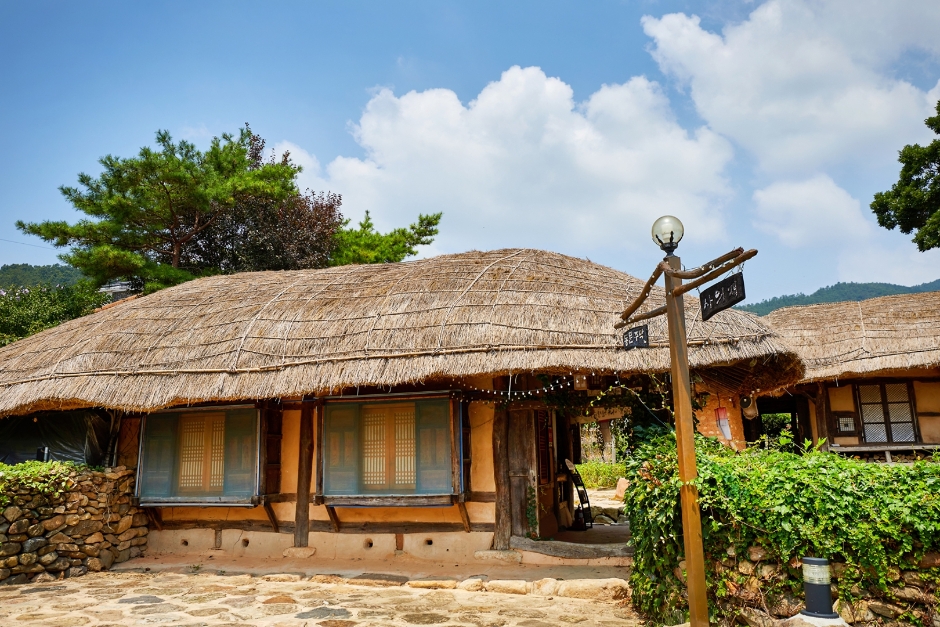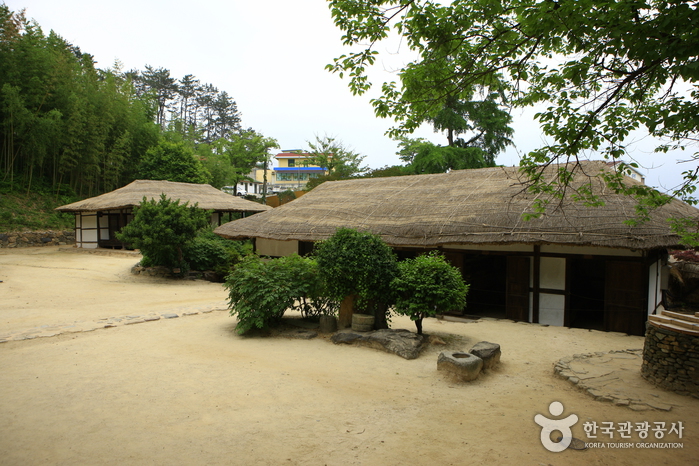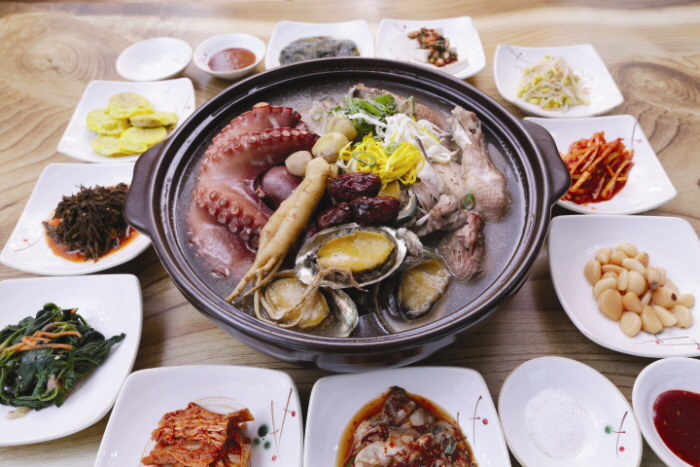Haetae Sikdang (해태식당)
18.0 Km 0 2024-02-16
6 Seoseongan-gil, Gangjin-eup, Gangjin-gun, Jeollanam-do
Haetae Sikdang specializes in Namdo-style hanjeongsik (Korean table d'hote), with the Haetae jeongsik (Haetae set menu) being the sole offering on its menu. This nutritious array of dishes is prepared using ingredients sourced from the rich natural environment of Gangjin. The selection of food varies seasonally, featuring Gangjin daehap (hard clams) in spring, minmul jangeo (freshwater eel) in summer, jeoneo (gizzard shad) and odori (raw shrimp) in autumn, and maesaengiguk (seaweed fulvescens soup) in winter, ensuring a diverse and fresh dining experience throughout the year.
Dongmun Maebanga (동문매반가)
18.0 Km 0 2024-01-11
27 Sauijae-gil, Gangjin-eup, Gangjin-gun, Jeollanam-do
Dongmun Maebanga is where Dasan Jeong Yak-yong, a representative civil servant of the Joseon dynasty and a Silhak scholar, stayed after being exiled to Gangjin. It now operates as a restaurant that serves the curled mallow soybean paste soup he enjoyed. It is right across from Sauijae House, where Dasan lived and devoted himself to education and academic research, so it is recommended to look around before going for a meal. Its signature menu is “Dasan Set Menu,” which comes with the curled mallow soybean paste soup and pan-fried battered clams. Other dishes such as braised red stingray, sea snail salad, and spicy stir-fried marinated pork are all plentiful and delicious.
Birthplace of Yeongnang (강진영랑생가)
18.3 Km 18614 2019-08-10
15, Yeongnangsaengga-gil, Gangjin-gun, Jeollanam-do
+82-61-430-3185
Kim Yun-sik was born on this site on January 16, 1903 as the first-born of two sons and three daughters. Under the pen name Yeongnang, he was active in literature until his death on September 29, 1950. Among the 80 poems he published, more than 60 were written in this place where he lived a life resisting Japanese imperialism and refusing to change his name to a Japanese name. After he moved to Seoul in 1948, his birthplace was resold several times, but the county of Gangjin-gun bought it in 1985 to restore it to its original state with a thatched-roof. The site features many of the poet’s writing materials and the site has a small well, camellia trees, jangdokdae (a platform where large clay pots used for storing food are kept), persimmon trees, and a peony garden.
Seongmunjeong (석문정)
18.8 Km 4592 2024-02-16
2059-7 Baekdo-ro, Doam-myeon, Gangjin-gun, Jeollanam-do
Seongmunjeong is renowned for its hoechuntang (chicken and seafood soup with medicinal herbs). In Gangjin, where meat and seafood are plentiful, hoechuntang emerged as a traditional dish, embodying the region's abundance. This wholesome soup, which combines medicinal herbs, octopus, abalone, and chicken without the addition of salt, is a testament to the area's culinary heritage. Its name, "return-to-spring soup," reflects the soup's reputed health benefits, believed to rejuvenate the diner and restore the vitality of one's youth.
Yulpo Beach (Solbat Beach) (율포해수욕장(솔밭해변))
19.1 Km 5376 2021-07-15
24, Uam-gil, Boseong-gun, Jeollanam-do
+82-61-850-5211
Yulpo Beach is a scenic beach with a 60-meter-wide, 1.2-kilometer-stretch of silver sand between the sea and a forest of 100-year-old pine trees. Despite its location in a small fishing village, the region’s famous green tea and beautiful beaches have resulted in attracting many tourists to Yulpo Beach. The area has become a family summer resort, fully equipped with accommodation and leisure facilities.




 English
English
 한국어
한국어 日本語
日本語 中文(简体)
中文(简体) Deutsch
Deutsch Français
Français Español
Español Русский
Русский